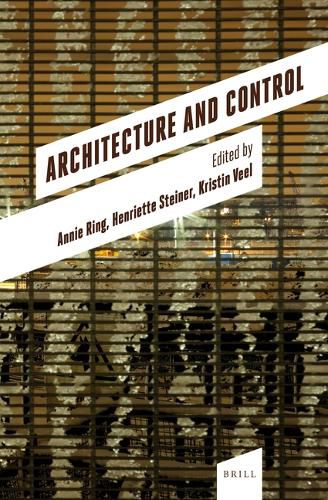Readings Newsletter
Become a Readings Member to make your shopping experience even easier.
Sign in or sign up for free!
You’re not far away from qualifying for FREE standard shipping within Australia
You’ve qualified for FREE standard shipping within Australia
The cart is loading…






Architecture and Control makes a collective critical intervention into the relationship between architecture, including virtual architectures, and practices of control since the turn of the twentieth to twenty-first centuries. Authors from the fields of architectural theory, literature, film and cultural studies come together here with visual artists to explore the contested sites at which, in the present day, attempts at gaining control give rise to architectures of control as well as the potential for architectures of resistance. Together, these contributions make clear how a variety of post-2000 architectures enable control to be established, all the while observing how certain architectures and infrastructures allow for alternative, progressive modes of control, and even modes of the unforeseen and the uncontrolled, to arise.
Contributors are: Pablo Bustinduy, Rafael Dernbach, Alexander R. Galloway, Hans Ulrich Gumbrecht, Maria Finn, Runa Johannessen, Natalie Koerner, Michael Krause, Samantha Martin-McAuliffe, Lorna Muir, Mikkel Bolt Rasmussen, Anne Elisabeth Sejten and Joey Whitfield
$9.00 standard shipping within Australia
FREE standard shipping within Australia for orders over $100.00
Express & International shipping calculated at checkout
Architecture and Control makes a collective critical intervention into the relationship between architecture, including virtual architectures, and practices of control since the turn of the twentieth to twenty-first centuries. Authors from the fields of architectural theory, literature, film and cultural studies come together here with visual artists to explore the contested sites at which, in the present day, attempts at gaining control give rise to architectures of control as well as the potential for architectures of resistance. Together, these contributions make clear how a variety of post-2000 architectures enable control to be established, all the while observing how certain architectures and infrastructures allow for alternative, progressive modes of control, and even modes of the unforeseen and the uncontrolled, to arise.
Contributors are: Pablo Bustinduy, Rafael Dernbach, Alexander R. Galloway, Hans Ulrich Gumbrecht, Maria Finn, Runa Johannessen, Natalie Koerner, Michael Krause, Samantha Martin-McAuliffe, Lorna Muir, Mikkel Bolt Rasmussen, Anne Elisabeth Sejten and Joey Whitfield